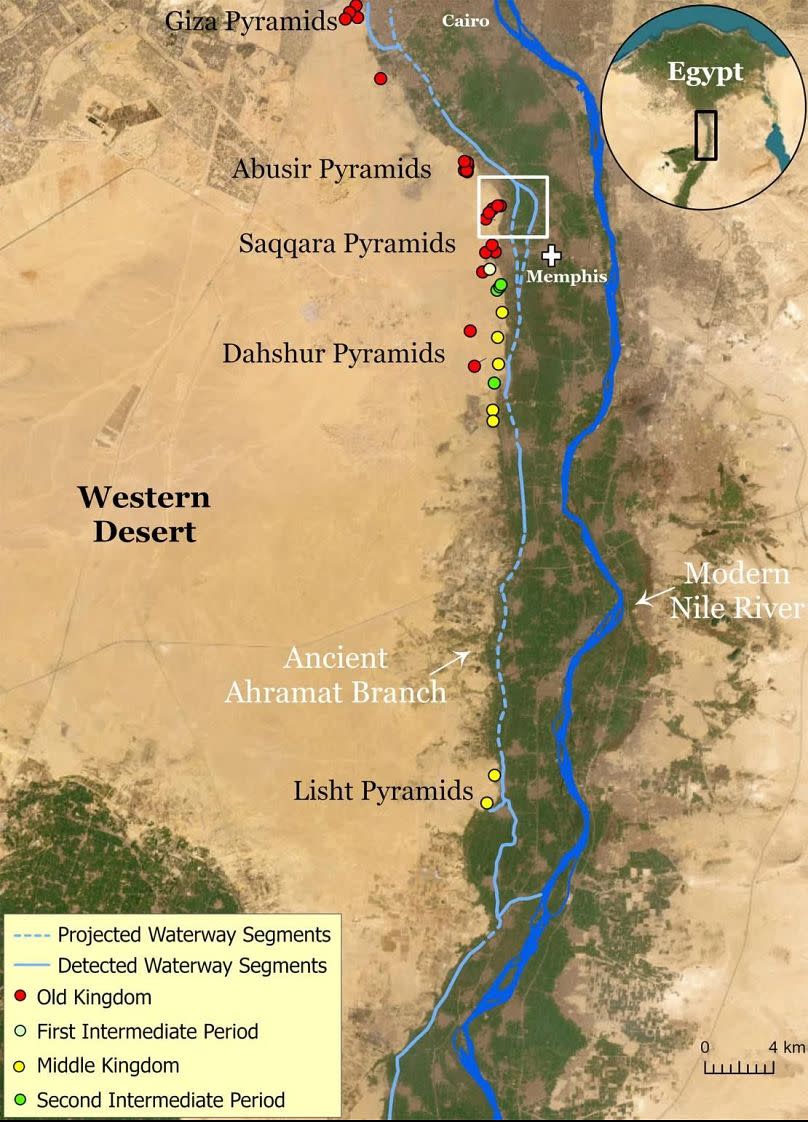4,000-year-old mystery solved: How the Giza Pyramids were built

Scientists think they may have finally cracked the age-old mystery of how 31 pyramids, including the famous Great Pyramid of Giza, were constructed in Egypt more than 4,000 years ago.
And no, it wasn't with the help of extraterrestrials.
A groundbreaking discovery by researchers from the University of North Carolina Wilmington reveals that these ancient marvels were likely built along a now-buried branch of the River Nile, concealed beneath desert sands and farmlands.
For years, archaeologists have speculated that the ancient Egyptians used a waterway to transport massive stone blocks and other materials needed for pyramid construction. However, the exact location and nature of this waterway remained elusive until now.
The newly discovered "Ahramat" Branch, stretching approximately 64 kilometres (39 miles) long, is believed to have been "used as a transportation waterway for workmen and building materials to the pyramids’ sites", the study states.
Spanish archaeologists restore extraordinary 3,000-year-old Egyptian coffin
Archaeologists unearth missing half of extraordinary Ramses II statue in Egypt

The researchers used a combination of radar satellite data, geophysical surveys, and soil coring to map this hidden branch.
According to the study, "countless valley temples in Egypt have not yet been found and, therefore, might still be buried beneath the agricultural fields and desert sands along the riverbank of the Ahramat Branch."
The reasons why this branch of the river dried up or disappeared remain uncertain. Most likely, a period of drought and desertification caused sand to sweep into the region, silting up the river, according to researcher Eman Ghoneim.

